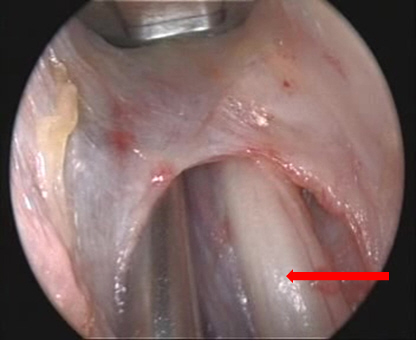Cubital tunnel syndrome (ulnar nerve entrapment)
The so-called cubital tunnel syndrome, colloquially often called "ulnar nerve entrapment," is characterized by a narrowing of the ulnar nerve in the elbow. The possible causes for the development of a chronic nerve compression are various and depend on different factors. Both the individual predisposition and external factors have influence on the development of the cubital tunnel syndrome.
Besides a slow onset of symptoms the cubital tunnel syndrome may occur in some cases quite suddenly in the form of deep-drilling pain in the elbow area. In addition to numbness in the area of the ring and little finger, a weakness to a complete loss of function of muscles supplied by the ulnar nerve is possible. In the late phase often a claw position of the fingers is present.
If no muscle weakness and no muscular atrophy exist, conservative measures with immobilization of the elbow, padding and splinting of the elbow and analgesic-anti-inflammatory drugs can be tried. In case of insufficient improvement or increase in symptoms surgical relief ("decompression") of the nerve should be carried out.
Several surgical procedures are available. For many years, a prolonged segment decompression followed by the relocation of the ulnar nerve to the inside of the upper arm / forearm was performed with good results. Alternatively, surgical techniques with the sole decompression of the ulnar nerve in the elbow channel have increasingly prevailed. In recent years, progressively, the minimally invasive endoscopic-assisted technique is applied. In our Department of Neurosurgery, a large proportion of patients are operated with the endoscopically-assisted technology according to Hoffmann.

Endoscopic view showing the already partially relieved ulnar nerve (arrow), which runs between the two heads of the flexor carpi ulnaris, which are connected by a tendon arch.




